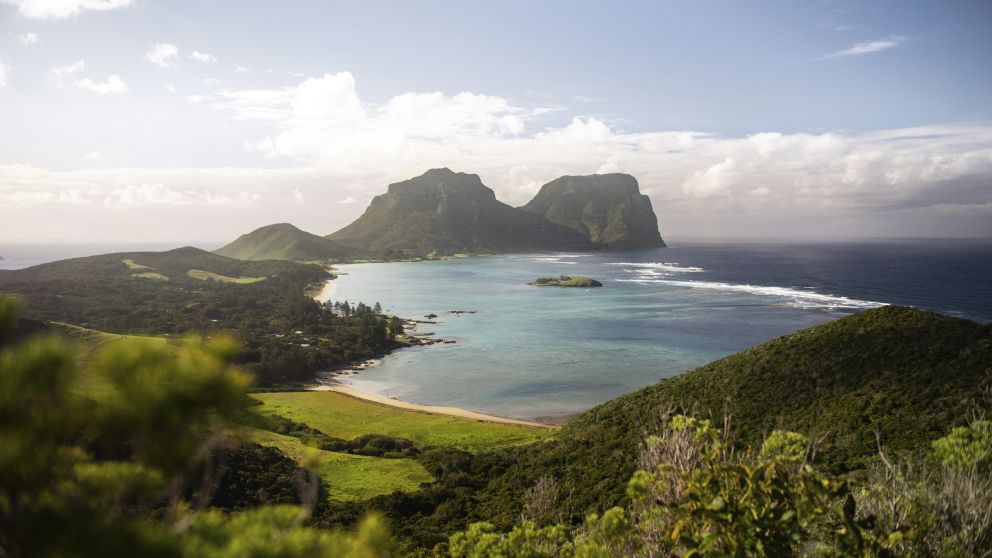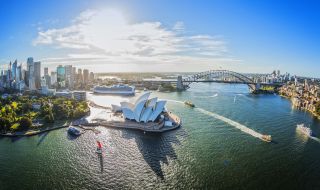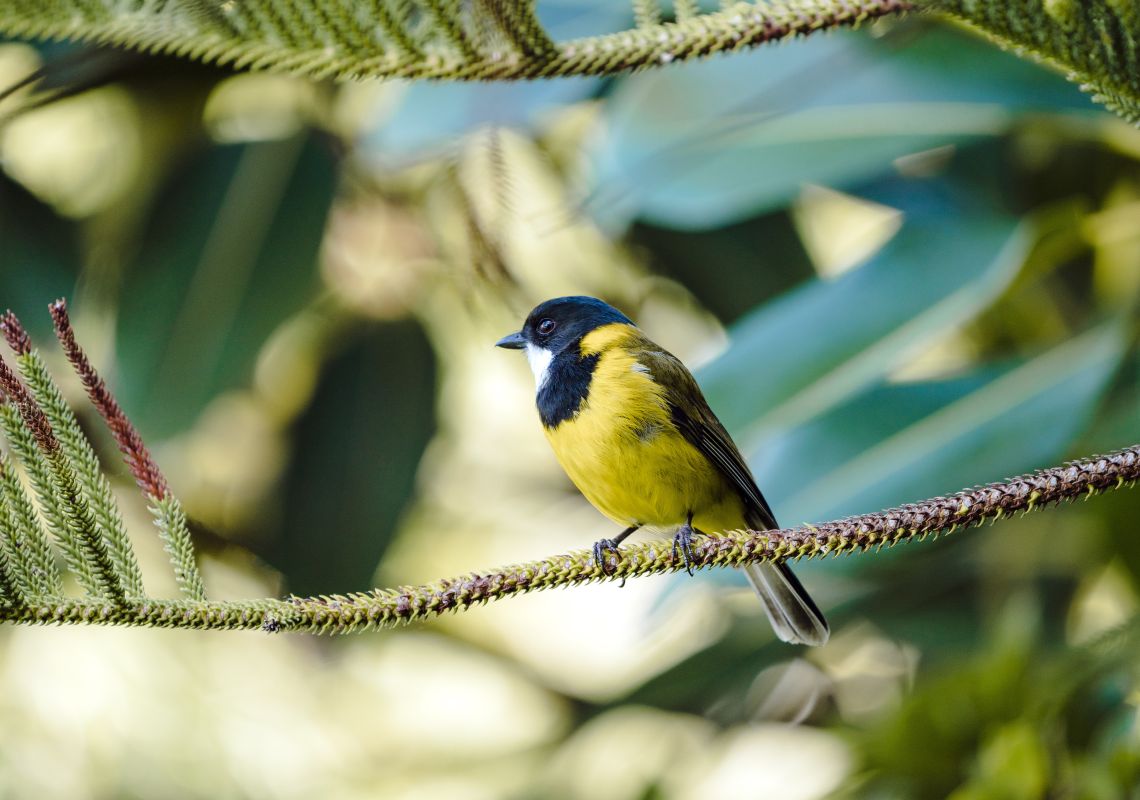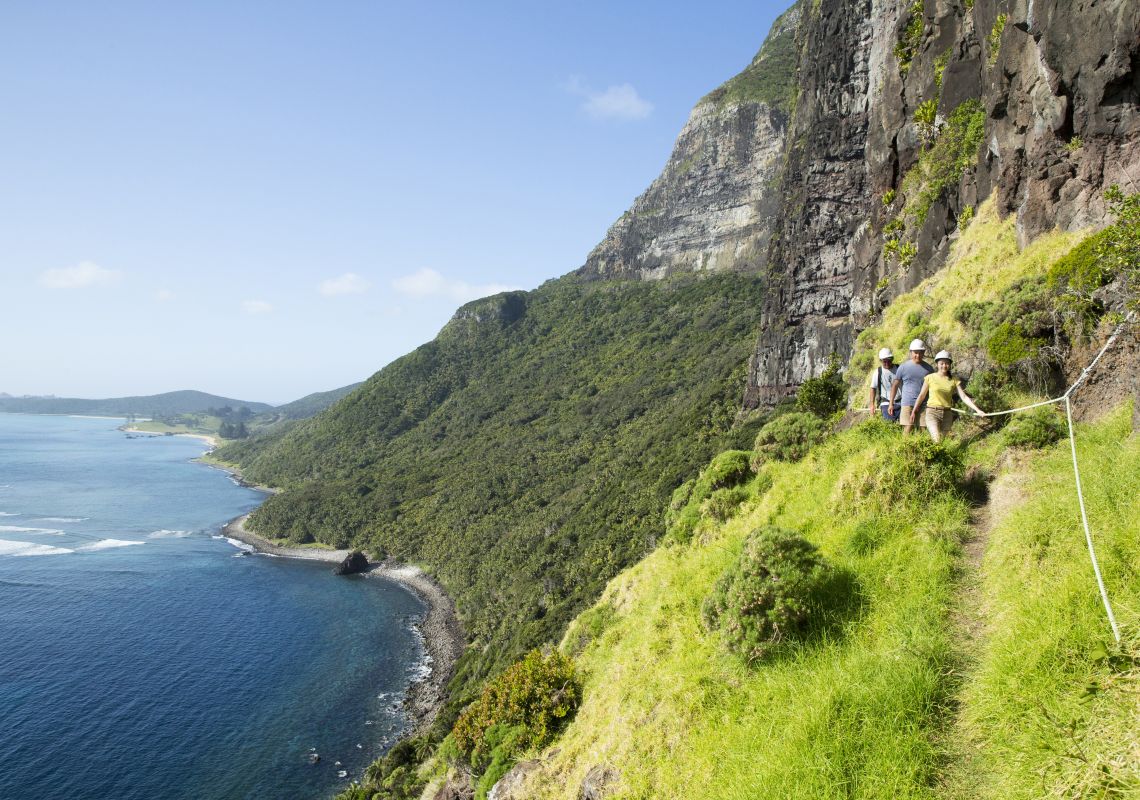
Scenic coastal views across Lord Howe Island to Mount Lidgbird and Mount Gower - Credit: tom-archer.com


Lord Howe Island is breathtaking in its natural beauty – from its famous twin peaks and unique plants and animals to its vivid coral reefs. The best way to experience the UNESCO World Heritage island is to immerse yourself in it, by hiking, snorkelling and diving.
Scientists discovered that Lord Howe Island is a remnant of a now-extinct shield volcano dating back 7 million years, that has eroded to one fortieth of its original size. First discovered in 1788, the island chain’s isolation plus tropical and temperate waters created what UNESCO says is the 'world’s most southerly true coral reef'.

The Lord Howe Island Marine Park is teeming with sea life where coral, algae and seagrass beds support a diversity of animals. Many species that occur in the waters are found nowhere else in the world.
There are about 450 species of fish, 90 species of coral, 320 species of algae, over 70 species of crustaceans, four species of turtles, dolphins and over 12 species of sharks and rays, including the rare Galapagos shark.
Loggerhead turtles and humpback whales migrate through the park and you can explore abundant marine life in the crystal-clear waters surrounding the island on your own or with a local tour operator. The coral reef protects the lagoon, making it suitable for swimming, snorkelling and other water sports with Reef N Beyond Eco Tours, Lord Howe Environmental Tours, Marine Adventures or Islander Cruises.
Lord Howe has some of the best diving in the world and Pro Dive offers a range of tours. Ball’s Pyramid is the island's premier dive site and is thought to be the only place in the world where Ballina angelfish can be seen on a recreational dive.

Lord Howe Island is an important seabird breeding ground and paradise for birdwatchers, with more the 130 bird species. The flightless Lord Howe woodhen and Lord Howe Island silvereye are the two surviving bird species endemic to Lord Howe Island. Between November and May, you can watch the courting rituals of red-tailed tropicbirds.
The island is one of only two nesting locations for Providence petrels, one of the world’s rarest birds, which can be seen around Mount Gower from March through September. Take a tour with renowned naturalist Ian Hutton to learn about the unique birds that can only be found on this remote outcrop.
The 14km return day trek to the summit of Mount Gower is considered one of Australia’s great walks. The walk must be undertaken with a registered guide, with both Sea to Summit Expeditions or Lord Howe Environmental Tours offering tours.

For an easier option, try the two-hour return Malabar Hill walk, which takes in breathtaking views over the twin peaks to the south and Admiralty Islands to the north – a popular scuba diving location.
The enchanting Little Island trail hugs the south-western shoreline through ancient Banyan trees and Kentia palms, and those who take a walk up to Transit Hill in the centre of the island will be rewarded with a wonderful panorama.
All the insider news, tips and inspiration you need to plan your next trip, delivered straight to your inbox.
Sign UpVisitNSW.com is the official tourism site for Destination NSW.
© Copyright 2023 Destination NSW. All rights reserved